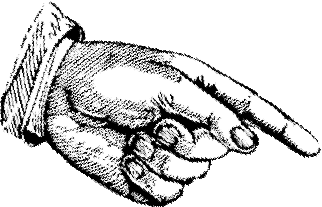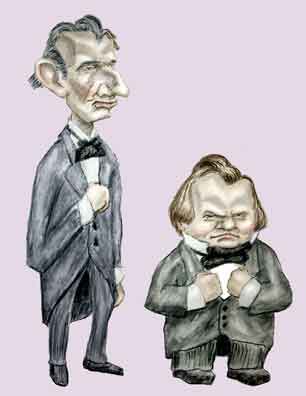Al and Drina

(Click on the image to zoom in.)
Everyone knows that there have been times that England was ruled by a Queen. Some Queens like Mary (of William and Mary fame) ruled alongside a King. But there were still others, starting with Queen Anne, who reined as the sole Monarch, and their husbands had to be content with being the significant other.
So when Albert, the son of Ernest I, Duke of Saxe-Coburg-Saalfeld, became Prince Franz August Karl Albert Emanuel, Prince of Saxe-Coburg-Gotha, the Prince Consort of Alexandrina Victoria Welf von Wettin, Saxe-Coburg-Gotha, of the House of Hanover, By the Grace of God, of the United Kingdom of Great Britain and Ireland Queen, Defender of the Faith, Empress of India, the question was just what was he going to do to keep busy.
Actually Prince Albert kept very busy. He didn't just advise Victoria on mundane matters like who to invite over for dinner or who was to sit with who at state functions. Albert took an active hand in political and cultural matters.
One of the most important events where Albert took a central role was the first World's Fair. For those who may be too young to remember these massive events that rotated every few years from country to country, a World's Fair - also called International Exhibitions or Expos - were where different countries were given designated areas where they would tout their culture and achievements to the rest of the world and offer amazing views of the "World of Tomorrow". Among the more famous of the World's Fairs were the Exposition Universelle (Paris, 1889), the World's Columbian Exposition (Chicago, 1893), the New York World's Fair (New York, 1939), the Century 21 Exposition (Seattle, 1962), and Expo 67 (Montreal, 1967). The importance of these massive extravaganzas began to fade after the 1960's although they haven't completely vanished.
But it was with Albert's sponsorship that the Great Exhibition of 1851, or more fully the Great Exhibition of the Works of Industry of All Nations, opened in May 1851. A huge pavilion called the Crystal Palace - essentially a massive green house over a third of a mile long - was built in Hyde Park and was to feature cultural and scientific exhibitions from around the World.
What the skeptical might have expected to be a massive white elephant - "Albert's Folly" if you will - was a smashing success. The exhibition attracted over six million visitors and ran until October. One of the exhibits was a massive hydraulic press that could lift items weighing over 1000 tons (yes, tons) but could be operated by one man. Another display was a steam-driven jackhammer that could do everything from mashing steel to gently cracking an egg. From America came the revolvers invented by Samuel Colt which got an honorable mention.
But it wasn't just cultural affairs where Albert exercised his influence. Albert would get involved in serious diplomacy. In fact, it's possible that it was Prince Albert's advice that kept England from coming in on the side of Confederacy. If that had happened, the Rebs might have won.
What happened was that in November, 1861, an American navy vessel, the San Jacinto commanded by the cantankerous Captain Charles Wilkes, stopped a British ship, the Trent, quite literally by a shot across the bow. This was either a bold or reckless move depending on your point of view since England was not at war with the United States.
The reason for the San Jacinto's action was that there were two Confederate envoys on board who were going to plead the case that England should recognize the Confederacy. Captain Wilkes sent an armed boarding party to the Trent who took the envoys as prisoners and hauled them back to Boston.
At this point the accepted wisdom in England was that the South would win the War. After all, England hadn't been able to stop thirteen American colonies from seceding from the British Union. So how could the rude crass Americans, who had just been whupped by the Rebs at the Battle of Bull Run, keep eleven states from taking out on their own?
Britain, though, had not officially recognized the Confederacy. Instead they declared they would remain neutral in the conflict. But because neutrality meant that Confederate ships could dock in English ports and the Confederacy could trade with England, the United States leadership had expressed their displeasure in spittle flinging yet diplomatically couched diatribes.
Honest Abe
Now if England was neutral and tried to send ships to the Confederacy, America was within its rights to sieze the ships that were trying to run the Union blockade. But that an American ship would fire on a British vessel on the open seas and abduct two of the passengers sent the British officials into conniption fits. There was now a real possibility that England would not just recognize the Confederacy but they might actually declare war on the United States. This was something that Honest Abe thought would be disastrous.
The English government demanded the two men be released. They also insisted on a complete and abject apology from the US government begging England's pardon. But before the demands were sent and keeping with the then protocol, the Prime Minister, Lord Palmerston, asked Queen Victoria for her opinion.
Victoria asked Albert what he thought and he said the British response was too tough. The Americans would never accept such strong wording demanded by the British and instead they needed a face saving exit. So Albert suggested that if the Americans would just say that the Captain had acted without authorization and they regretted his actions, the British could then say OK, just let the guys go, and that would be that. Everyone agreed with Albert's level headed solution. The Confederate envoys were released and allowed to sail for England. The "Trent Affair" was over.
Officially the recommendation for the final wording was from the Queen and indeed Victoria certainly included her thoughts and suggestions. But there's no doubt that Albert's practical head sitting squarely on his shoulders played a major part in what may have prevented the United States from losing the Civil War.
The resolution of the Trent Affair was one of Albert's last acts. He was literally dying. The official diagnosis was typhoid fever but modern opinions have come up with alternate diagnoses which of course can't be proven. Albert died on December 14, 1861, only two weeks after the Trent Affair was resolved.
But now and at last, we've come to the
 THE
THE
BIG QUESTION
... that everyone's been waiting for. And that's
 Prince Albert,
Prince Albert,
 Did He
Did He
or
 Didn't He?
Didn't He?
It is true that assurances can be found on the Fount of All Incontestable Knowledge and Wisdom1 that there are - quote - "contemporary references" - unquote - that Prince Albert sported the body adornment that famously bears his name. And there are citations - even in scholarly publications that such apparati were found in the Victorian Era. But notice how there are never any references given and all attempts at verification remain unrealized.
Certainly the words "Prince Albert" are cited with GREAT frequency starting around 1833 with the peak number of citations falling within the years 1835 to 1862. However, the use of the words as the device of interest and the claim that its first use was in the Victorian Era only began showing up after the mid-20th century. Claims are made with any regularity only after 1985.
Admittedly absence of evidence is not evidence of absence, but when there is absence there is no evidence. The difficulty is that there are hundreds and thousands of references with the relevant words that have nothing do with decorative body art. So the would-be scholar seeking evidence of Prince Albert's Prince Albert has to wade through literally thousands of pages even if whittled down by electronic searching.
About the only type of piercing that is mentioned in contemporary Victorian publications is earrings, ornaments common to virtually all cultures and over spans of millennia. Ironically one clearcut Victorian reference is about how one lady's ears were NOT pierced because "tawdry" earrings were "horrors" which should never be indulged in.2
Footnote
Another common claim these days is that the ladies of the Renaissance used piercings with the devices placed in two strategic locations to help maintain their bodices after deep décolletage became popular. Again verifiable contemporary references for these anneaux de sein remain elusive.
There are also modern accounts that Victorian gentlemen with their famously tight trousers - as preferred by Prince Albert - resorted to a restraining device called a "dressing ring". The story is that the tailors would inquire if their customers preferred the dressing ring a la gauche or a la droite.
Yes, there are references to "dressing rings" or "dress rings" in Victorian Era publications. However these refer to a number of unrelated items used in enterprises such as food service, surgical procedures, and industrial manufacture. But they are not about devices for keeping a particular part out of sight if not out of mind.
Instead a common use for the words "dressing rings" or "dress rings" is simply for the jewelry worn on the fingers that are suitable for formal occasions. "Dress" in the Victorian Era referred to formal dress for both men and women. Well into the 20th Century you can read that in England when informality was desired, an invitation would state "not to bother to dress", wording which today may raise a few eyebrows on what was actually going on.3
Footnote
The modern references to the "dressing rings" intended for men's trousers - some which appear only after the Millennium - can't seem to agree if the "dressing ring" was an actual piercing or merely a non-invasive restraint.

